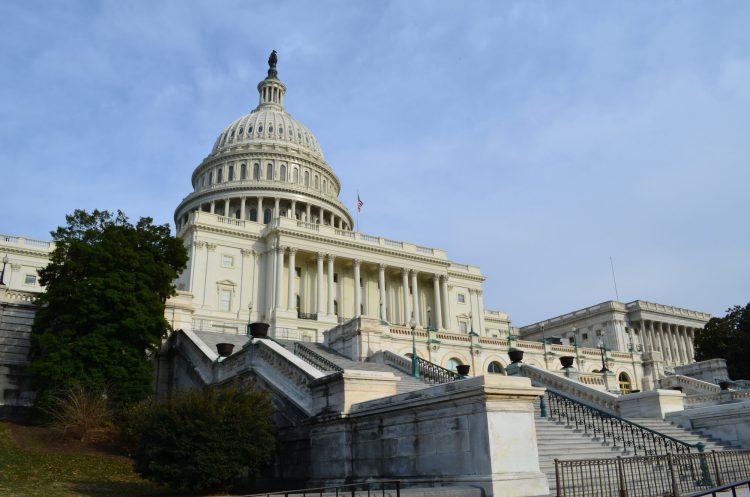Looking Out for Future Generations
The federal budget remains on an unsustainable path while politicians in both parties seem incapable or unwilling to do anything about it. They are not looking out for the best interests of future generations.
That must change. If we don’t do more to look out beyond the traditional 10-year budget window, today’s young people will face an array of harmful consequences, everything from a slower-growing economy to diminished national security.
The current budget process encourages short-term thinking by over-focusing on the next few years. As analysts from all sides generally agree, our truly unsustainable fiscal problems stem from commitments that extend far into the future.
Looking out only five or ten years may have been adequate when most federal spending was appropriated annually. It is insufficient now that most of the budget consists of interest costs and entitlement programs rising on autopilot.
Unfortunately, Congress and a succession of Presidents have piled one short-term fiscal crisis on top of another, leaving a series of small, brokered compromises. The major long-term challenges have been largely ignored.
Wanted: Fiscal Lookouts
Washington needs more fiscal lookouts, policymakers who look beyond short-term budget windows, watch for signs of trouble and act to avoid impending dangers.
Over the coming year, The Concord Coalition will urge presidential and congressional candidates to discuss how their proposals would put the nation on a sustainable fiscal path.
The Challenge Not Met
Long-term projections by the Congressional Budget Office (CBO) demonstrate that the government is in an increasingly difficult position to address its fiscal challenge.
- In 2018, the first fiscal year for which the new president will present a budget, the projected deficit will be $549 billion (2.7 percent of GDP).
- Projections for a hypothetical second term show a steadily worsening situation, with the deficit above $1 trillion and rising in each year. By 2026, the last year of CBO’s 10-year outlook, the deficit will be almost $1.4 trillion (4.9 percent of GDP).
- Debt held by the public is projected to grow from 76 percent of GDP this year to 86 percent in 2026, far above the 39 percent average for the past half-century.
- According to CBO, “Beyond the coming decade, the fiscal outlook is significantly more worrisome,” with debt rising further to 155 percent of GDP by 2046.
This is not a scenario that calls for spending increases or tax cuts, even if offsetting actions are taken to “pay for” them. Keeping the debt from rising higher than current projections does nothing to address the unsustainable path the budget is already on.
The basic dynamics (population aging and rising health care costs), long warned of and now coming true, mean that spending growth on the major entitlement programs is outpacing revenue growth, squeezing out other programs and adding to the debt. Under current law:
- Over the next 10 years, CBO projects that revenues will rise by $1.6 trillion, remaining at about 18 percent of GDP through that time.
- Spending, however, will rise by $2.5 trillion between 2016 and 2026, growing from 21.1 percent of GDP to 23.1 percent.
- Most of this spending growth will be driven by major health care programs (32 percent of the increase), Social Security (29 percent of the increase), and interest on the debt (24 percent of the increase).
- Mandatory spending — which grows on autopilot and includes the major entitlement programs — along with interest on the debt will consume 98 percent of all revenues by 2026.
- Social Security and Medicare continue to pay out more than they take in from their designated revenues. The programs’ trustees report that, “Social Security as a whole as well as Medicare cannot sustain projected long-run program costs under currently scheduled financing. Lawmakers should take action sooner rather than later to address these structural shortfalls.”
According to CBO, “The number of people age 65 and older is now more than twice what it was 50 years ago, and over the next 10 years, that number is expected to rise by more than one-third.”
The CBO also notes that while “health care spending grew more slowly in the past several years than it has historically…over the coming decade, per-enrollee spending in federal health care programs will grow more rapidly than it has in recent years.”
The spike in interest payments on the debt, from $253 billion in 2016 to $839 billion in 2026, is attributable to continued government borrowing and interest rates gradually rising to more typical levels.
Other federal programs would grow much more slowly in dollar terms and actually decline as a percentage of GDP. Of particular note is the projected path of discretionary spending, those programs funded through the annual appropriations process.
Owing in large part to tight caps agreed to in the Budget Control Act of 2011, discretionary spending — which includes defense, education, transportation, justice, environment and certain veterans’ benefits – will decline from 6.5 percent of GDP in 2016 to 5.2 percent in 2026. This would be the lowest level since record-keeping for this category began in 1962. The 50-year average for discretionary spending is 8.7 percent of GDP.
The contrast between shrinking levels of discretionary spending and rising deficits is captured by the remarkable projection that in 2026 they will both amount to roughly $1.4 trillion.
That means cutting “waste, fraud and abuse,” as so many candidates advocate, is not the answer; Congress would have to eliminate all discretionary spending to balance the budget that year (assuming there were no entitlement cuts or tax increases).
“To avoid the negative consequences of high and rising federal debt,” CBO says, “and to put debt on a sustainable path, lawmakers will have to make significant changes to tax and spending policies—letting revenues rise more than they would under current law, reducing spending for large benefit programs below the projected amounts, or adopting some combination of those approaches.”
Democrats and Republicans will have differing views on how these issues should be addressed. Resolving those differences is what the legislative process is all about. But let there no doubt that we have a serious problem and that it must be addressed sooner rather than later. The next President and Congress will not have the luxury of putting off the hard choices.
Kerrey-Danforth: A Useful Framework For Substantive Challenges
The seven bipartisan findings of the Kerrey-Danforth Commission on Entitlement and Tax Reform provide a useful framework for analyzing the key fiscal issues confronting the 2016 candidates. Those findings:
#1. To ensure that today’s debt and spending commitments do not unfairly burden America’s children, the government must act now. A bipartisan coalition of Congress, led by the President, must resolve the long-term imbalance between the government’s entitlement promises and the funds it will have available to pay for them.
#2. To ensure the level of private investment necessary for long-term economic growth and prosperity, national savings must be raised substantially.
#3. To ensure that funds are available for essential and appropriate government programs, the nation cannot continue to allow entitlements to consume a rapidly increasing share of the federal budget.
#4. To be effective, any attempt to control long-term entitlement growth must take into account the projected increases in health care costs.
#5. To be effective, any attempt to control long-term entitlement growth must also take into account fundamental demographic changes.
#6. To respond to the Medicare trustees’ call to action and ensure Medicare’s long-term viability, spending and revenues available for the program must be brought into long-term balance.
#7. To respond to the Social Security trustees’ call to action and ensure the long-term viability of Social Security, spending and revenues available for the program must be brought into long-term balance. Any savings that result should be used to restore the long-term soundness of the Social Security Trust Fund.
A Better Future Requires Action Now
We’re placing a growing burden on future workers and investing less in the economy that will be called upon to support that burden. This generationally irresponsible pattern will continue absent major changes that alter the long-term trend lines rather than simply postpone a crisis.
Realistically, the next chance to pursue comprehensive solutions will come with the first budget of the new president in 2017. So it is vital that voters give serious scrutiny to the fiscal proposals being made on the campaign trail. Do these proposals address the key issues? Do the numbers add up? Is there any chance these proposals could actually be enacted?
A better future for America can be secured if the country embarks on a course of long-term reform of our entitlements and tax system. Americans must save and invest more in themselves and the country. We can make the essential public investments in our workers and our children. And we can maintain the strength of vital government programs that support and protect many Americans.
These goals will require some hard political choices and the willingness to compromise.
If candidates have objections to the Kerrey-Danforth findings and the reforms toward which they point, let them explain those objections.
If they support the Do-Nothing Plan, let them declare so publically and own the consequences.
In any event, we must move beyond tired partisan talking points. If we look out to the future, it is clear that the time for procrastination has passed. We must act.
Continue Reading

